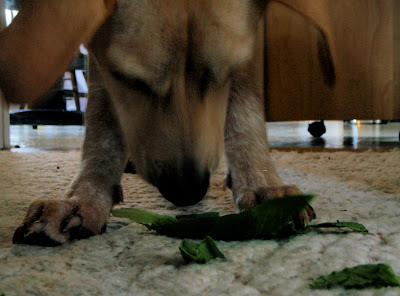Thanks to Debs for sending me this NYT article, which decries the absence of wild foods in the American diet, especially in feasts such as the one must of us enjoyed yesterday. The author of the article, Andrew Beahrs, referenced that same Mark Twain menu I wrote about on the second most recent post at the Chefs Collaborative blog. It seems he's working on a book that will further plumb the significance of Twain's diet, and I wait with baited breath.
As anyone who reads T&F knows, I too bemoan the decline of wild foods in modern gastronomy. But one thing I find missing from Beahrs piece is a mention of the resurgence of wild foods among people like myself and many of you.
If, like Bearhrs, you wish that wild foods had a stronger presence on our tables, go get some. No, there aren't as many left as there were in Twain's day, but they're still out there. Why am I so sure? Yesterday, when walking along a levy in a fairly suburban part of west St. Louis county, we came upon four wild persimmon trees teeming with fruit. They tasted like apricots and dark honey without even a trace of the infamous persimmon astringency.
We filled our arms with as many as we could carry, and there were plenty left for us to make a return trip, which I hope to do, and for the animals. Oli, our pooch, gulped one down in one bite, and I'm sure the local coyotes will do the same.
On a feast day more famous for sweet potato fluff and green been casserole, we ate native fruit that ripens at exactly the time of Thanksgiving, and which therefor may have been on the original menu.
There are accessible wild foods near wherever you live. Yes, even in NYC. Develop a relationship with them, and maybe you'll write the next Huck Finn.




























